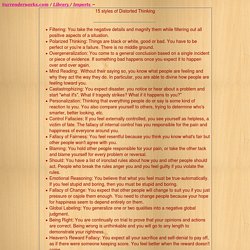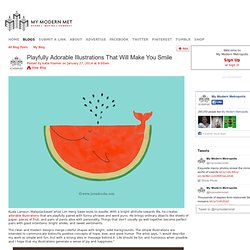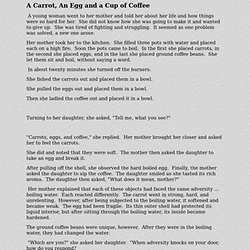

15 styles of Distorted Thinking. 15 styles of Distorted Thinking Filtering: You take the negative details and magnify them while filtering out all positive aspects of a situation.

Polarized Thinking: Things are black or white, good or bad. You have to be perfect or you're a failure. There is no middle ground. Overgeneralization: You come to a general conclusion based on a single incident or piece of evidence. Checklist for Hidden Anger Procrastination in the completion of imposed tasks. » Thinking About How to Think - World of Psychology. Have you ever taken a course on how to manage your mind?

Have you ever read a book on how to think? I doubt it. Most of us believe we’ve learned how to think by going to school and learning about the world. But most schooling teaches you only one way of thinking: figuring out the right answer. Once you’ve done that, many believe that there’s no need to reflect on the ideas you have or the beliefs you maintain. But here’s the problem with this approach. I find it fascinating that enlightening yourself about healthy ways to maintain your body is part of our culture. But enhancing your thinking skills? We’ve all heard the phrase, “it’s not so much what you say but how you say it that matters.” But have you ever heard the axiom, “It’s not what you think but how you think it?”
So, let me offer you a few quick tips on good thinking that can help you meet new challenges without undue anxiety. Hedgehog's dilemma. Both Arthur Schopenhauer and Sigmund Freud have used this situation to describe what they feel is the state of individual in relation to others in society.

The hedgehog's dilemma suggests that despite goodwill, human intimacy cannot occur without substantial mutual harm, and what results is cautious behavior and weak relationships. With the hedgehog's dilemma, one is recommended to use moderation in affairs with others both because of self-interest, as well as out of consideration for others. The hedgehog's dilemma is used to explain introversion and isolationism. Schopenhauer[edit] The concept originates in the following parable from the German philosopher Arthur Schopenhauer's Parerga und Paralipomena, Volume II, Chapter XXXI, Section 396:[1] A number of porcupines huddled together for warmth on a cold day in winter; but, as they began to prick one another with their quills, they were obliged to disperse.
Freud[edit] Social psychological research[edit] References[edit] The Sixteen Personality Types - High-Level. ISTJ - The Duty Fulfiller Serious and quiet, interested in security and peaceful living.

Extremely thorough, responsible, and dependable. Well-developed powers of concentration. Usually interested in supporting and promoting traditions and establishments. Well-organized and hard working, they work steadily towards identified goals. Click here for a detailed description of ISTJ. ISTP - The Mechanic Quiet and reserved, interested in how and why things work. Click here for a detailed description of ISTP. ISFJ - The Nurturer. Playfully Adorable Illustrations That Will Make You Smile.
Kuala Lampur, Malaysia-based artist Lim Heng Swee loves to doodle.

With a bright attitude towards life, he creates adorable illustrations that are playfully paired with funny phrases and word puns. He brings ordinary objects like sheets of paper, pieces of fruit, and pairs of pants alive with personality. Things that don't usually go well together become perfect pairs with good intentions, bright smiles, and sweet sentiments. The clean and modern designs merge colorful shapes with bright, solid backgrounds. The simple illustrations are intended to communicate distinctly positive concepts of hope, love, and good humor. Heng Swee Lim's website via [L'Acte Gratuit] A Carrot, An Egg and a Cup of Coffee. A Carrot, An Egg and a Cup of Coffee A young woman went to her mother and told her about her life and how things were so hard for her.

She did not know how she was going to make it and wanted to give up. She was tired of fighting and struggling. It seemed as one problem was solved, a new one arose. Her mother took her to the kitchen. In about twenty minutes she turned off the burners. She fished the carrots out and placed them in a bowl. She pulled the eggs out and placed them in a bowl. Then she ladled the coffee out and placed it in a bowl. Turning to her daughter, she asked, "Tell me, what you see? " "Carrots, eggs, and coffee," she replied. She did and noted that they were soft. After pulling off the shell, she observed the hard boiled egg. Her mother explained that each of these objects had faced the same adversity ... boiling water. The ground coffee beans were unique, however. "Which are you? " Are you a carrot, an egg or a coffee bean? " Think of this: Which am I?
Sunil Bali. Neuroscience Art Gallery: Art by Psychotics. Louis Wain. Self Portrait. What are the top five books you must-read? 10 Myths About Introverts.